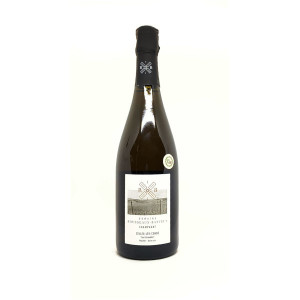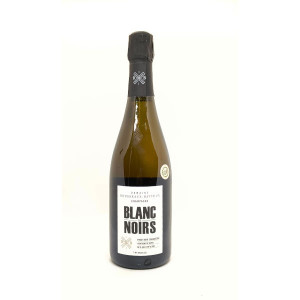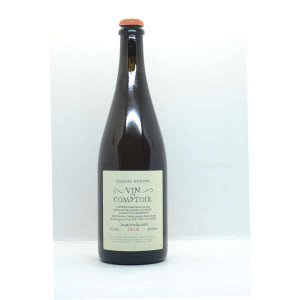Champagne
Champagne is synonymous with world-wide quality wine with bubbles. Champagne is the northernmost wine region of France, located around the 49th parallel, where it would normally be impossible to ripen grapes at this distance from the equator. But thanks to the influx of the sea, the climate is sufficient mild to allow the right ripening of the grapes. One of the Champagne secrets is the composition of the soils that are rough and chalky with hilly exposure to the South / South-East, which promote good vine vegetation. Most Champagne uses Pinot Noir, which gives body, structure and longevity; the Chardonnay that delivers refinement and freshness; and Pinot Menier which gives fruity aromas and mineral notes. Strictly defined in 1927, the Champagne production airline extends into five departments that are: Reims Mountains, Vallee de la Marne, Cote des Blancs, Cote de Sezanne and Aube for a total of about 30,000 hectares. The Reims Mountains are located south of Reims with the vineyards facing south on peaty land. Here the predominant grape is the Pinot Noir and Champagne are renowned for power, structure and nobility. The Vallee de la Marne hills have clayey and calcareous soils. The main grape variety is the Pinot Meunier, which gives Champagne guts with a high softness. In the Cote des Blancs, whose name is given by the fact that almost exclusively Chardonnay grapes are cultivated, the only white berry authorized to produce Champagne. The ground is plastered and guarantees high water and heat reserves to the subsoil.In the Cote des Sesanne, a rapidly developing area, 16 kilometers from the Cote des Blancs. Chardonnay also prevails here, which is more fruity than those of the Cote des Blancs. Finally in the Aube, the area most south of Champagne, closer to the Chablis than to the classic Marne vineyards. The soil is plastered, ideal for Pinot Noir, which gives round, round, complex aromatic wines. The Champagne vineyards, broken down by village, are classified according to the quality with a percentage score determined by the Echelle des Crus. The Grand Cru classified villages have a 100% share, while Premiers Cru ranges from 90 to 99%, and the grapes in these villages are paid less. Today there are 17 Grand Cru villages. Champagne is obtained from Chardonnay, Pinot Noir and Pinot Meunier grapes, vinified according to the so-called champenoise method. It begins with the vintage that is done towards the middle of October because of its very north of Champagne which does not allow a degree of ripening of grapes in previous periods. The selection of grapes is manual, while the traditional selection of wicker trays called osiers is now a rarity. Stirring of grapes takes place through modern torches even though traditional vertical presses, which are close to coquard are the best. The first squeezing is called cuvèe, while the second squeezing. In a traditional coquard that has a capacity of 4000 pounds of grapes, only 2550 liters of juice can be extracted (of which 2050 cuvèe and 500 of taille). The juice thus obtained is brought to the first fermentation that gives a very acidic wine The first fermentation can take place either in steel tanks or wooden barrels. As a rule towards spring, assembly is proceeded, which is the delicate operation that allows to balance two or more varieties of grapes so as to create the final cuvée that will be bottled for the second fermentation This assembly operation requires highly experienced staff to be able to assemble a cuvèe equal year after year. The second fermentation is the essence of the champenoise method. The cuvée is bottled along with the tirage liquer, which is a mixture of Champagne, sugar, yeasts and clarifying agents. The amount of sugar that is injected depends on the degree of effervescence required, in order to produce a pressure of 6 atmospheres, 24 grams of sugar are required. After bottling the bottles come with a crown cap having a plastic cylinder to capture the sediment produced during the foaming. The second fermentation can last from ten days to three months, while rest on the yeast lasts for 15 months for a non-milled Champagne, 36 months for one millennium up to a few decades for prestigious cuvèe. In short, a Champagne rests on yeasts and improves their quality. After that period the bottles are put on the pupitres (which are wood hinged tops and equipped with 60 holes each) and begins the remuage operation that is to rotate the bottles daily by sliding them all the way further down so that the lees that formed during the second fermentation settle in the plastic cylinder. To permanently remove the plastic cylinder, use degorgement or outlet, which allows the neck of the bottle to immerse in a sediment-freezing solution. When the crown cap is removed, the sediment is ejected by the internal pressure of the bottle. Before being put on the market, Champagne is added to the expedition liquor, consisting of a mixture consisting of a secret ingredient, different for each home, and sugar that serves to achieve the degree of sweetness desired in Champagne. Each Champagne label contains the manufacturer's classification with an identifier identifying the type of manufacturer and its code number. The abbreviations are: Rècoltants-Manipulants, abbreviated in RM, where we find producers grafting their grapes and market them with their own brands. The best producers give birth to a sparkling and unmistakable sparkling Champagne. Usually these wines are little exported and little known abroad. The Negociant-Manipulant, NM, is a wine house that, in addition to its own grapes, also produces grapes purchased by others. The financial strength and the great variety of grapes purchased makes it possible to produce very complex and balanced cuvèes. The Rècoltant-Cooperator, RC, are producers who give the grapes produced to a cooperative that produces and sells Champagne such products with their own brand. The main Champagne styles are: Blanc de Blancs, obtained from Chardoonay in purity, Blanc de Noirs, produced from pure Pinot Noir grapes, Champagne Millésimè, Champagne produced from grapes of the same vintage. But when to drink Champagne? According to Lily Bollinger's response to a British journalist: "I drink Champagne when I'm happy and when I'm sad. Sometimes I happen to drink it when I'm alone. If I'm in company, I consider it compulsory. I go towards a glass when I'm not appetite and I drink it during meals. For the rest, I never touch it, except when I'm thirsty ":


















